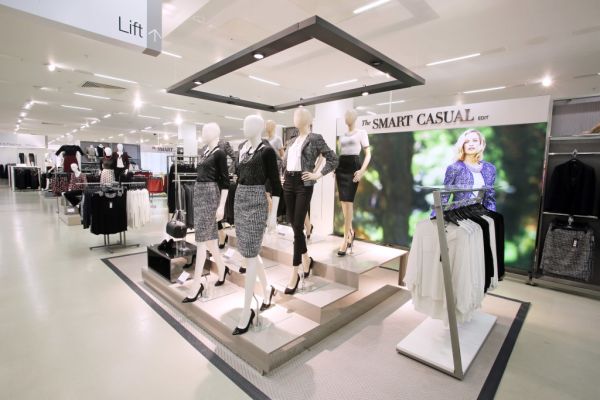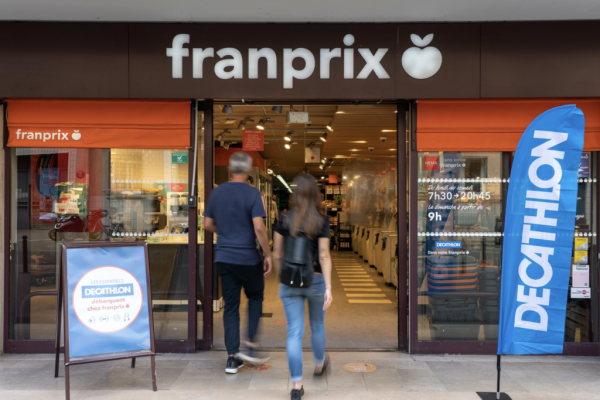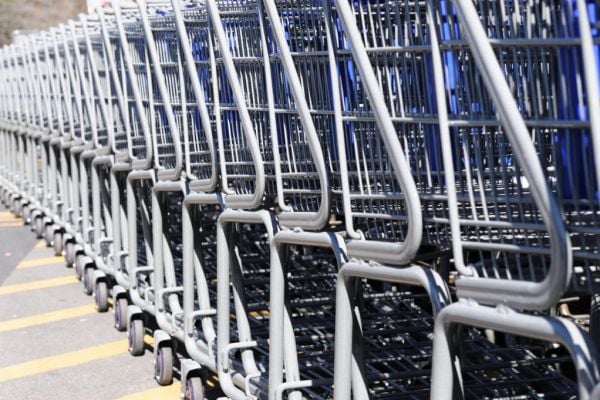Steve Rowe says he wants to listen to customers. The new Marks and Spencer CEO needs to do more than that. He should share some of the gains M&S has made from overhauling its supply chain by giving shoppers better quality products at cheaper prices.
The British high street bellwether revealed another dismal sales performance on Thursday, with a 2.7 per cent decline in fourth-quarter same-store clothing , accessories and homeware sales. That's a bit better than expected but, according to Rowe, still unsatisfactory.
As Gadfly's noted, his predecessor Marc Bolland tried and failed to lift sales so resorted instead to fattening up the gross margin. That's the difference between how much it costs retailers to manufacture and transport the goods to their stores and the price they sell them for.
M&S said Thursday that the gross margin probably increased by 2.4-2.5 percentage points in the year just ended, the top end of its estimate.
The focus on the margin has helped a little. Pretax profit before exceptionals is expected to have reached £670 million in the year to March 2016, up from £661.2 million the year earlier.
M&S has also returned £150 million to shareholders through a buyback.
With the heavy lifting of investment in everything from warehouses to the website now largely over, cash should start to increase. Free cash flow is forecast to rise to £715 million in the year to March 2019, from £577 million in the year just ended. That's fueled expectations of more capital returns.
But this hasn't helped the shares, down almost 30 per cent since late May 2015. Rowe would be better off using this cash to invest in the products in M&S stores.
There are signs that styles are improving, for example in the Autograph brand. Sales there rose 10 per cent in the quarter. But quality needs to be elevated, and prices remain too high, despite some reductions.
Of course, M&S will never rival Primark on price. But it should be able to compete with Next and John Lewis. Getting the price right first time would help M&S step off the treadmill of constant discounting.
Rowe won't reveal his strategic hand until full-year results in May. But he believes M&S can return to same-store growth in clothing and home furnishings. He's likely to focus on getting fit right, and having products that customers want to buy, in the sizes they need, on the shelves.
M&S says availability is improving, but it needs to get better. Too many of the garments it does get right sell out too quickly. Just look at a white off-the-shoulder blouse featured in Vogue magazine. It's out of stock before the first warm weather has arrived.
So Rowe has his work cut out. Even the consistently high performers at Next have warned that this year could be the toughest since 2008.
He'll also need to address M&S's store base, where old units are often in the wrong parts of town. Exiting leases is expensive.
He could offset some of this by taking a much-needed ax to costs, perhaps by getting rid of some brands. While Bolland's margin focus papered over the cracks for a while, Rowe really needs to invest more in the customer. In the end that'll do more for shareholders than the occasional £150 million buyback.
This column does not necessarily reflect the opinion of Bloomberg LP and its owners.
News by Bloomberg, edited by ESM. To subscribe to ESM: The European Supermarket Magazine, click here.














